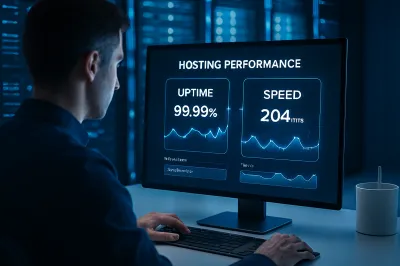Affiliate SEO Guide (2026): How to Write Review Articles That Rank & Convert
Affiliate marketing is a powerful business model, but it operates in a highly competitive SEO landscape. Simply writing a review and inserting a link is no longer enough. To succeed in 2026, you must create content that not only ranks on Google but also builds deep, authentic trust with your readers.
This guide provides a practical, academic-backed blueprint for creating affiliate review articles that achieve both of these critical goals.
Quick TOC: Jump to Any Section
- Understanding Commercial Intent Keywords
- The Anatomy of a High-Converting Review Article
- Using Schema Markup to Stand Out
- Building Authority with Quality Backlinks
1. Understanding Commercial Intent Keywords
The foundation of affiliate SEO is targeting users who are actively in the buying cycle. These users search with commercial intent keywords. Your primary task is to identify and target these terms.
Keyword Categories to Target:
- "Best X for Y" Keywords – The most valuable category. Example: “best web hosting for small business”. These users are looking for recommendations.
- "Review" Keywords – Users looking for in-depth analysis of a specific product. Example: “Hostinger web hosting review 2026”.
- "Comparison" Keywords – Users comparing two or more products. Example: “Hostinger vs. SiteGround”.
- "Alternative" Keywords – Users looking for substitutes. Example: “Mailchimp alternatives”.
2. The Anatomy of a High-Converting Review Article
A successful review article must be structured to build trust from the very first sentence. Your goal is to be a helpful, expert advisor, not just a salesperson.
“Trust is the currency of affiliate marketing. Without it, even a #1 ranking is worthless. The best review articles are radically transparent and prioritize the reader's needs above the commission.”
Essential Components of a Trustworthy Review:
- Immediate Transparency: Start with a clear affiliate disclosure at the top of the article. This builds instant trust.
- Show, Don’t Just Tell: Include genuine screenshots, photos, or videos of you using the product.
- Balanced Analysis (Pros & Cons): Acknowledge weaknesses as well as strengths to prove objectivity.
- Clear "Who Is This For?" Section: Help readers self-qualify whether the product is a fit.
- A Definitive Verdict: Summarize your stance and recommendation clearly.
Example of a Pros & Cons Box:
Pros
- Extremely affordable pricing
- User-friendly control panel
Cons
- Support can be slow at times
- Fewer advanced features
3. Using Schema Markup to Stand Out
Schema markup provides structured data to search engines, enabling "Rich Results" for your reviews. This is a technical advantage you cannot afford to ignore.
Two Crucial Types for Affiliate Articles:
- Review Schema: Lets you specify a star rating (e.g., 4.5 out of 5) and author details. Google can show stars directly in search results, making your link more eye-catching.
- Product Schema: Useful when reviewing a specific product. You can specify product name, brand, and key features.
Using both in combination can significantly increase your organic click-through rate (CTR).
4. Building Authority with Quality Backlinks
Google trusts review sites that other reputable sites trust. Earning high-quality backlinks is a critical authority signal.
Strategies to Build Authority:
- Be the Primary Source: Run unique case studies or tests (e.g., web host speed benchmarks). Others will link to your data.
- Promote Your Best Content: Share your in-depth reviews in communities and forums where appropriate.
- Guest Posting: Write for other blogs in your niche and link back to your reviews as resources.
By combining targeted keywords, trust-building content structure, schema optimization, and backlink strategies, your affiliate articles will be positioned to not only rank well but to convert readers into loyal followers and customers.





